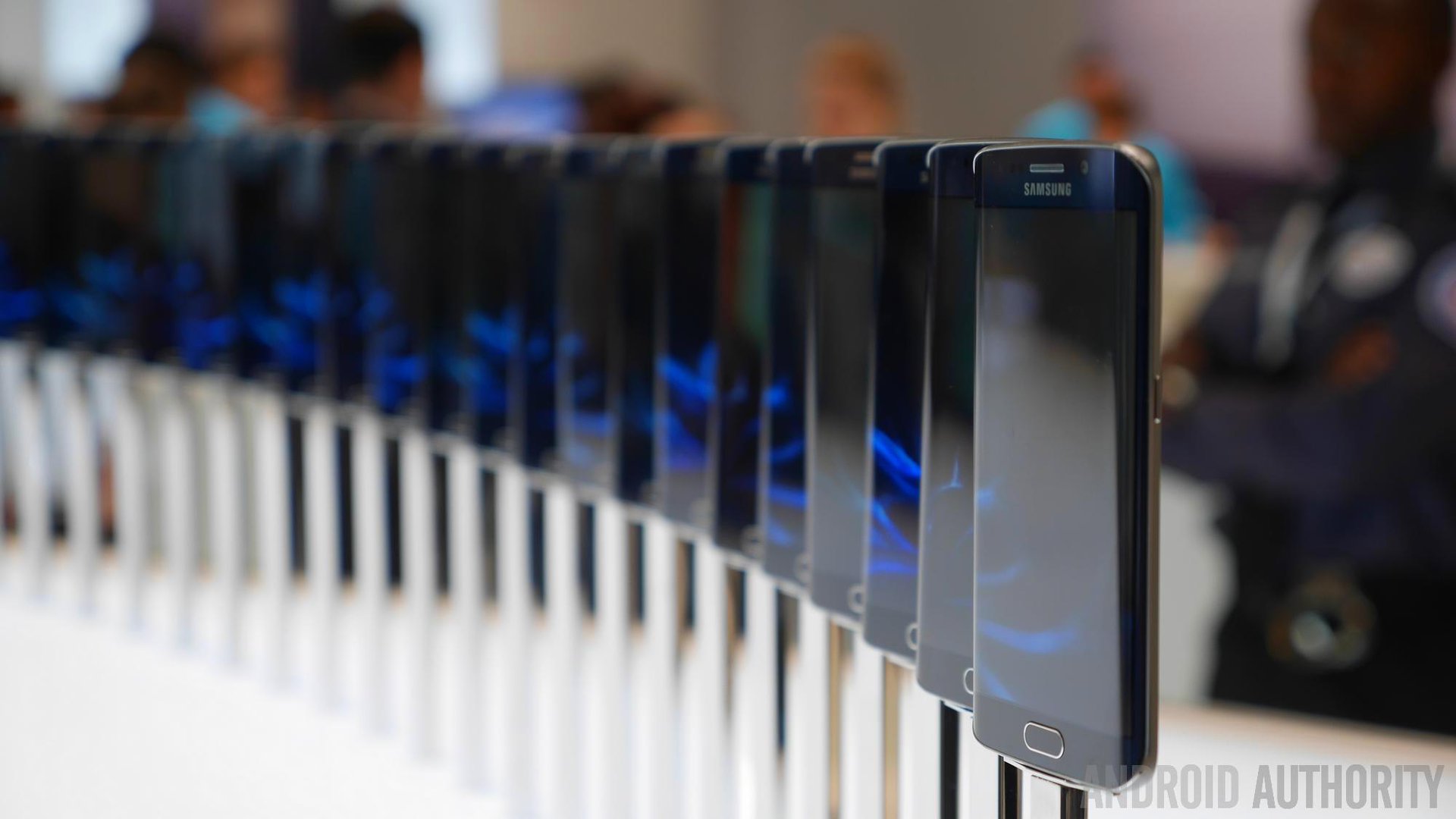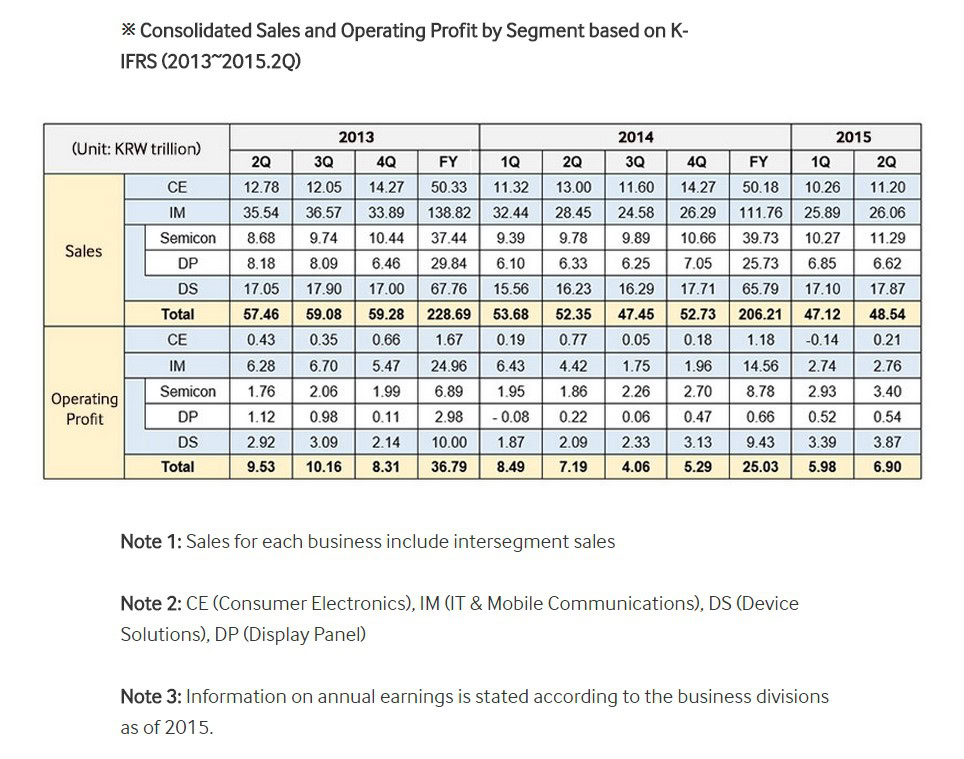Affiliate links on Android Authority may earn us a commission. Learn more.
Samsung shipments dropped in Q2, “mounting challenges” expected for the rest of the year

Samsung announced its financial results for Q2 2015, and the news is worrying when it comes to the mobile segment.
Samsung Electronics accrued total revenues of 48.54 trillion won ($41.5 billion) in the quarter that ended on June 30, a slight increase over the previous quarter, but more than 7 percent lower than Q2 2014. Operating profit grew significantly over Q1 2015, from 5.98 trillion won ($5.1 billion) to 6.9 trillion won ($5.9 billion), but profit is still down 4 percent from the same quarter last year.
These are the company’s overall results, including the IT & mobile, consumer electronics, semiconductor, and display divisions.
The situation is less rosy if we look at the results of the flagship mobile unit. Profit increased only marginally, from 2.74 trillion won ($2.34 billion) in Q1 to 2.76 trillion won ($2.36 billion) in Q2 2015.

Despite the launch of the well-received Galaxy S6 and S6 Edge, profit took a 37.6 percent plunge compared to Q2 2014.
Like in the previous quarter, strong sales in the memory chips and SoC business helped offset the decline in the mobile unit.
Samsung’s official announcement contains some clues of the reasons the mobile business is struggling. Samsung reported “increased shipments” of the Galaxy S6 and S6 Edge, but shipments dropped overall because of “declining shipments of older middle- to low-end models.” This shouldn’t be a surprise: Chinese players have been aggressively launching affordable mid-rangers, making Samsung’s products seem overpriced and underpowered.
Samsung also blamed Galaxy S6 Edge supply difficulties (whose popularity reportedly took the company by surprise), but claimed the issues are now solved.
The company warned of “mounting challenges” for the second half of the year, with a “difficult business environment” expected to stint the growth of the mobile business. To keep sales strong, Samsung will “adjust” the price of the Galaxy S6 and release new premium devices (the Galaxy Note 5 and S6 Edge Plus are coming August 13).
It’s becoming increasingly clear that Samsung may not return to growth anytime soon. The industry has become too competitive, with full-on flagship phones launching at $400 and solid entry-level devices for less than $100. Samsung is still benefiting from its brand, market awareness, and distribution, but more and more consumers realize that cheaper devices from new players (or even established ones like Motorola) are a better deal. For now, the erosion is relatively slow, but the stories of former market leaders like Nokia, HTC, or BlackBerry suggest it could turn into crumbling pretty fast. That’s not to say Samsung’s days are numbered – the company is deeply embedded in the mobile landscape, and even if its market share diminishes, it can continue to reap billions off its component business.